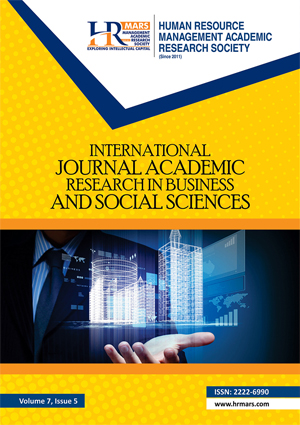
ISSN: 2222-6990
Open access
The rapid growth of Master of Translation and Interpreting (MTI) programs in China reflects the increasing demand for high-quality translation services across multiple sectors. However, recent studies indicate a concerning trend: a significant number of Chinese MTI graduates are reluctant to pursue full-time translation careers, citing perceived inadequacies in their translator competence relative to market demands. This study investigates Chinese MTI students’ self-perceptions of their current translator competence and explores the factors that influence the quality of Chinese MTI programs. By adopting a mixed-methods approach, this research combines quantitative data from surveys with qualitative insights from in-depth semi-structured interviews with MTI students from different universities in China. The findings reveal that MTI students’ self-perceptions of the sub-competences of their translator competence are at medium level. This study highlights the gap between academic training and industry expectations, underscoring the need for curriculum adjustments that emphasize practical competence development and real-world exposure. These insights contribute to a better understanding of the challenges facing MTI programs in China and offer recommendations to bridge the competence gap, thus improving the employability and market readiness of future translators.
Academic Degrees Office of The State Council of the People’s Republic of China. (2024, August 1). The Academic Degrees Office of The State Council announces the results of the review of degree authorization in 2024. EOL News. https://news.eol.cn/yaowen/202408/t20240801_2627272.shtml
Bednarz, F. (2010). Building up intercultural competences: Challenges and learning processes. In M. G. Onorati & F. Bednarz (Eds.), Building intercultural competencies: A handbook for professionals in education, social work, and health care (p. 39). Acco.
Braun, V., & Clarke, V. (2006). Using thematic analysis in psychology. Qualitative Research in Psychology, 3(2), 77–101. https://doi.org/10.1191/1478088706qp063oa
Creswell, J. W., & Plano Clark, V. L. (2017). Designing and conducting mixed methods research (3rd ed.). SAGE Publications.
Cui, Q. (2017). A survey report on China’s MTI education and employment. University of International Business and Economics Press.
Delisle, J. (1980). L’analyse du discours comme méthode de traduction [Discourse analysis as a translation method]. University of Ottawa Press.
EMT Expert Group. (2009). Competences for professional translators, experts in multilingual and multimedia communication. European Commission. Retrieved from https://ec.europa.eu/info/sites/info/files/emt_competences_translators_en.pdf
Feng, Y., Tao, Y. L., Wang, H. S., Cui, Q. L., & Xu, B. (2019). Restructuring translation education: Implications from China for the rest of the world. Springer Nature Singapore.
Field, A. (2013). Discovering statistics using IBM SPSS statistics (4th ed.). SAGE Publications.
Göpferich, S. (2009). Towards a model of translation competence and its acquisition: The longitudinal study TransComp. In S. Göpferich, A. L. Jakobsen, & I. M. Mees (Eds.), Behind the mind: Methods, models & results in translation process research (pp. 11–37). Samfundslitteratur.
Kang, M. S. (2014). The translation profession in Malaysia: The translator’s status and
self-perception. GEMA Online® Journal of Language Studies, 14(3), https://doi.org/10.17576/GEMA-2014-1403-12
Kang, M. S. (2015). A comparative study of the translation profession in Malaysia and Korea [Unpublished doctoral dissertation]. University of Malaya, Faculty of Languages and Linguistics.
Kiraly, D. (2000). A social constructivist approach to translator education: Empowerment from theory to practice. St. Jerome.
Kiraly, D. C. (2013). Towards a view of translator competence as an emergent phenomenon: Thinking outside the box(es) in translator education. In D. Kiraly, S. Hansen-Schirra, & K. Maksymski (Eds.), New prospects and perspectives for educating language mediators (pp. 197–224). Narr.
Kvale, S. (2007). Doing interviews. SAGE Publications.
Lesznyàk, M. (2007). Conceptualizing translation competence. Across Languages and Cultures, 8 (2), 167-194.
Li, R. L. (2011). Redefining the goal of translator education: A shift from translation competence to literacy development. Chinese Translators Journal, 1, 46–51.
Luo, Y. Y. (2002). The instrument theory and its harm to foreign language education. Foreign Languages and Their Teaching, 3, 50–51.
L?, H. Y. (2019). A study of the influencing factors on the quality of Chinese MTI programs under the concept of “student-oriented.” Shanghai Journal of Translators, 4, 60–65.
L?, H. Y. (2019). A study on the quality evaluation of MTI programs in China under the framework of IPO. Foreign Language World, 2, 42–49, 81.
Mu, L., Zhong, W. H., & Wang, W. W. (2013). Reflection on current translator and interpreter education: From the perspective of professionalization. The Chinese Translators Journal, 1, 89–95.
Neubert, A. (2000). Competence in language, in languages, and in translation. In C. Schäffner & B. Adab (Eds.), Developing translation competence (pp. 3–18). John Benjamins. https://doi.org/10.1075/btl.38.03neu
Salamah, D. (2021). Translation competence and translator training: A review. International Journal of Linguistics, Literature and Translation, 4(3), 276–291. https://doi.org/10.32996/ijllt.2021.4.3.29
PACTE. (2003). Building a translation competence model. In F. Alves (Ed.), Triangulating translation: Perspectives in process oriented research (pp. 43-66). Amsterdam/Philadelphia: John Benjamins Publishing Co. https://doi.org/10.1075/btl.45.06pac
Peng, Q. (2017). On systematic reforming of MTI quality standards and assessments. Foreign Languages in China, 14(3), 74–81.
Translators Association of China. (2022). The annual report on the development of China’s translation and language service industry [Online]. Available at https://zhuanlan.zhihu.com/p/559400771
Wang, J., & Peng, Y. (2012). Problems and their possible solutions in MTI education. Foreign Language World, 4, 44–51.
Wilss, W. (1976). Perspectives and limitations of a didactic framework for the teaching of translation. In R. Brislin (Ed.), Translation applications and research (pp. 117–137). Gardner.
He, X., & Kang, M. S. (2025). Chinese MTI Students’ Self-Perceptions of the Status Quo of their Translator Competence and the Influential Factors. International Journal of Academic Research in Business and Social Sciences, 15(2), 77–91.
Copyright: © 2025 The Author(s)
Published by HRMARS (www.hrmars.com)
This article is published under the Creative Commons Attribution (CC BY 4.0) license. Anyone may reproduce, distribute, translate and create derivative works of this article (for both commercial and non-commercial purposes), subject to full attribution to the original publication and authors. The full terms of this license may be seen at: http://creativecommons.org/licences/by/4.0/legalcode